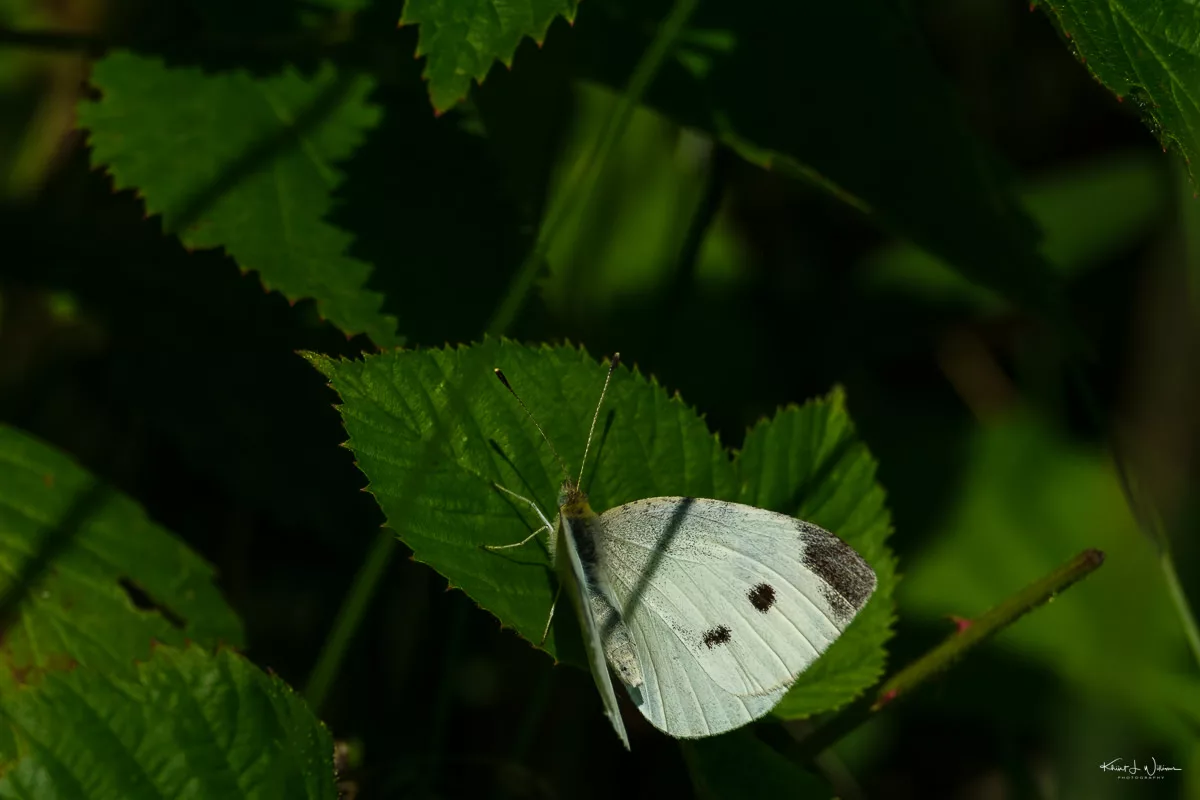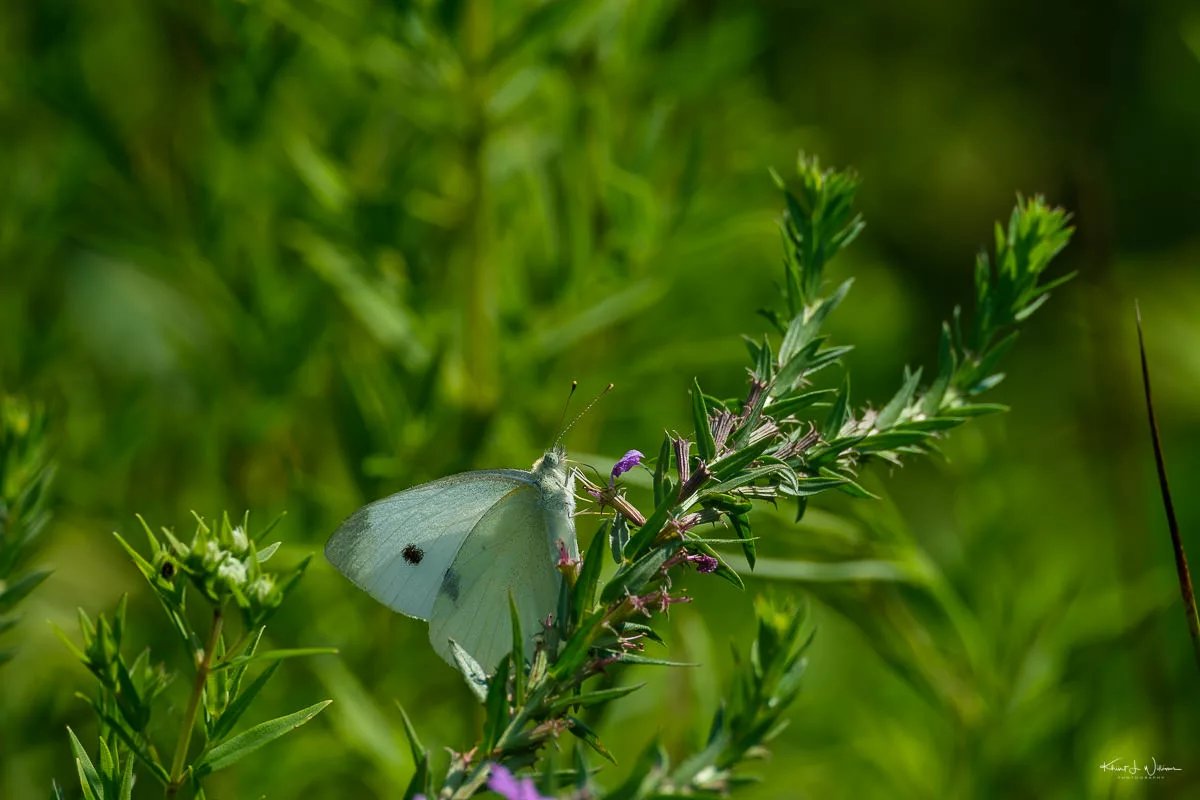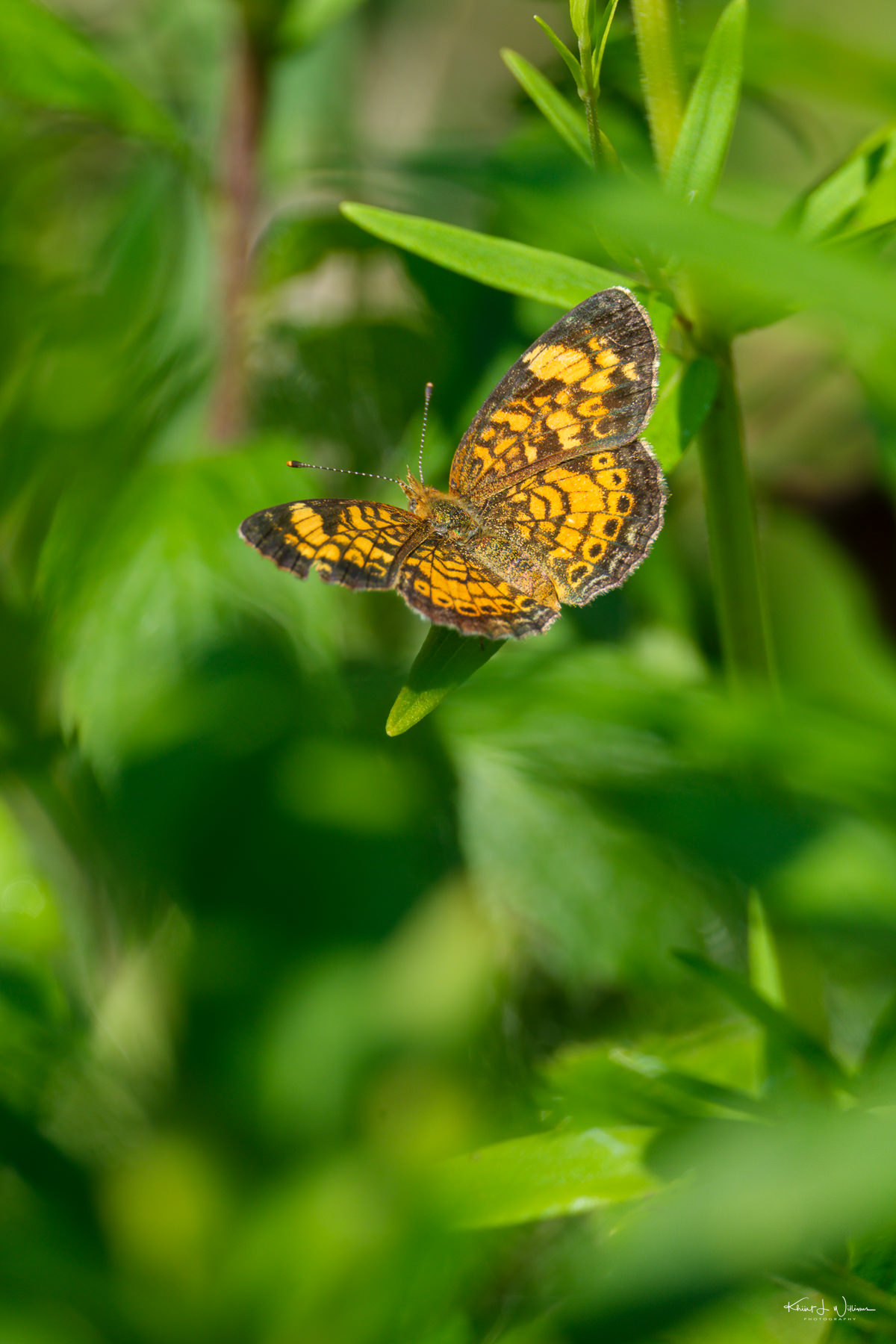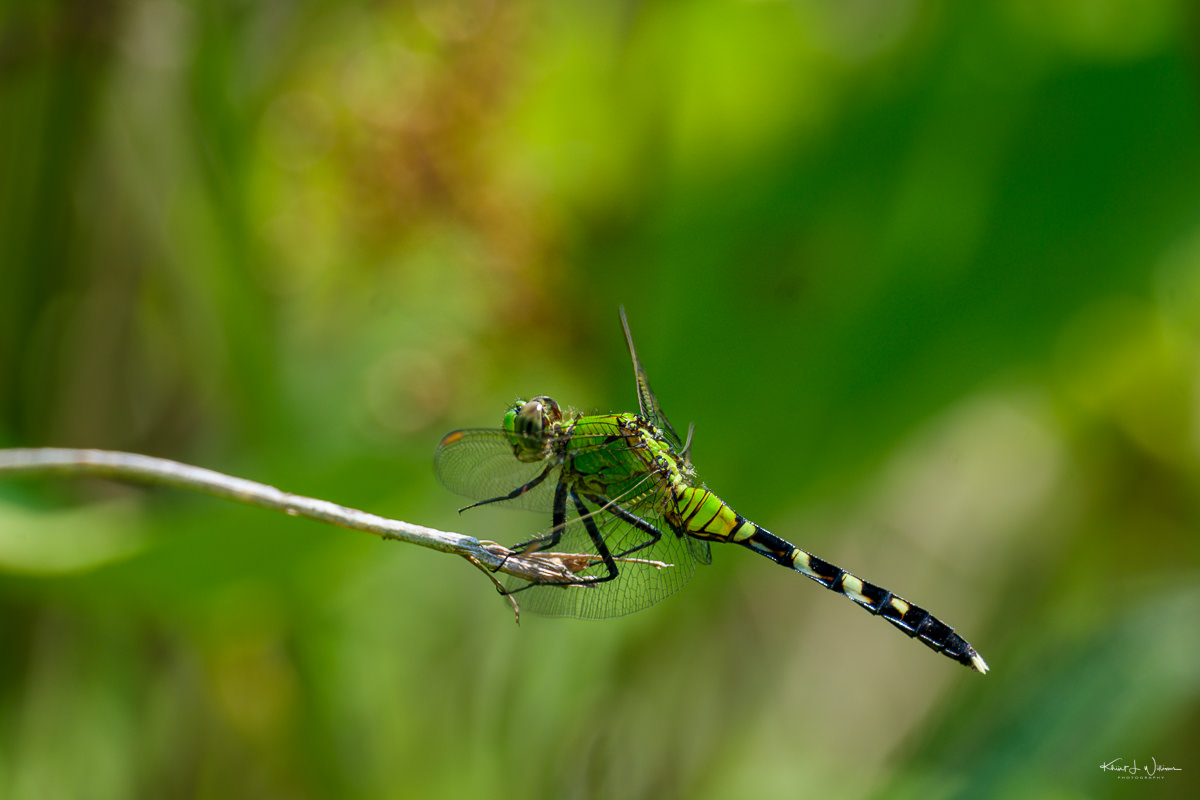Many insects fly around the flowers in the Bowman’s Hill Wildflower Preserve meadow. I saw different butterflies, including the Pearl Crescent Butterfly. They were not cooperative with my efforts to make portraits.
I also noticed many Cabbage White butterflies (Pieris rapae) gracefully fluttering in the meadow. This butterfly, known as the small white in Europe, has a rather interesting backstory. The Pieris rapae butterfly, initially from Europe, accidentally found its way to North America, arriving via Quebec in 1860. Since then, this invasive butterfly has become familiar, thriving in regions extending from central Canada and the United States to northwest Mexico.

The Cabbage White butterfly is attracted to plants like cabbage, broccoli, and cauliflower. Its larvae have a distinct behaviour of creating circular perforations in the leaves, often affecting the outer leaves of these plants. This feeding habit can lead to visible damage, as the excrement produced by the larvae can cause discolouration of the plant heads. However, the adult Cabbage White butterflies do not contribute to any direct harm to plants. They peacefully go about their business without causing any damage.



